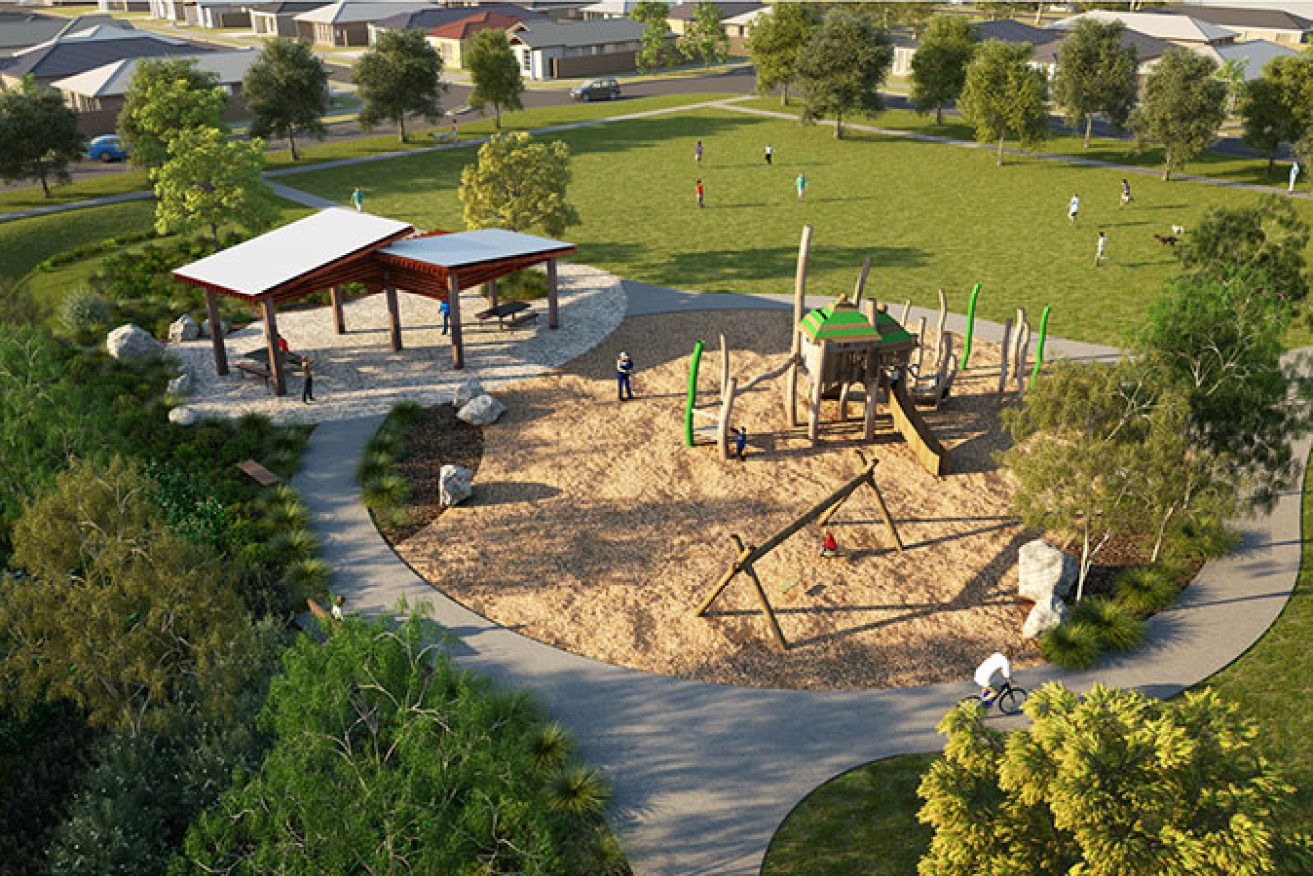The changing face of Australia’s housing estates


In the late 1980s and early 1990s, the average new housing estate comprised small subdivisions with pegged patches of dirt criss-crossed with roads and not much else. Parks, shops and other community amenities followed much, much later.
“We now have residents-only recreational facilities with pools, tennis courts, function rooms and gymnasiums, extensive parks and open space, state-of-the-art playgrounds, sculptures and public art, outdoor fitness tracks and trails and so much more.”
In 2014 the urban fringe housing estate is usually a large, master-planned affair with landscaped parks, schools, shops, community halls and transport services all in the pipeline.
• Want to live by the beach? Check out these locations
• Preparing your home for Spring auction season
• Gold Coast property market is shining again
Yes, the blocks are smaller and more expensive – on average about 450sqm or less – but most of the services such as water, sewerage and power are provided up front. Many estates also offer internet cabling to each home and public art sculptures.
Demographer Chris McNeill says estates are now more environmentally friendly and energy efficient. He adds that developers are also more conscious of conserving water by “harvesting” it through rainwater tanks and the better use of drainage and any watercourses that may run through an estate.
 “Among the key changes in the last 20 years are the presentation of the housing lot itself, with changes in street layout to maximise solar orientation, a decline in the number of courts and a subsequent return to a more conventional grid street pattern to maximise connectivity within and between housing estates,” says Mr McNeill, who is a director of Spade Consultants and a former policy advisor to the Urban Development Institute of Australia.
“Among the key changes in the last 20 years are the presentation of the housing lot itself, with changes in street layout to maximise solar orientation, a decline in the number of courts and a subsequent return to a more conventional grid street pattern to maximise connectivity within and between housing estates,” says Mr McNeill, who is a director of Spade Consultants and a former policy advisor to the Urban Development Institute of Australia.
“Also, at a housing lot level, you’re now likely to see underground power and fibre optic cable to the house. At a local street level, you’re now more likely to see lighting poles specifically designed to reflect the theme or nature of the estate rather than a stock standard concrete pole, and perhaps a swale drain which introduce a landscape and water purifying aspect into drainage rather than the standard curb and channel.”
Mr McNeill says there is “far more emphasis on landscaping, public art and public open space” than there was in the past. “Where watercourses flow through an estate, they are now frequently a central feature of an estate with extensive wetlands and community infrastructure,” he says.
The demographer points out that while lots sizes may have declined over the past decade or two, there is now a broader range of block sizes which include medium density allotments, which are typically 200 sqm to 300 sqm and often located near or adjacent to public open space.
Mr McNeill says larger new estates now offer a greater level of local, district and regional infrastructure as well as retail and commercial enterprises – usually all located in a central hub.
Villawood Properties’ executive director, Rory Costelloe says estates have changed in line with people’s expectations. “Years ago, everyone had the dream of owning a huge four to five bedroom home with a massive back yard,” says Mr Costelloe, whose company has about 10 per cent of Melbourne’s outer residential land market. “Nowadays, most buyers are happy with an alfresco space and a smaller dwelling or apartment living.” But he adds that potential buyers want much more from estates than they did in the past including a high level of community services.
 “We now have residents-only recreational facilities with pools, tennis courts, function rooms and gymnasiums, extensive parks and open space, state-of-the-art playgrounds, sculptures and public art, outdoor fitness tracks and trails and so much more.”
“We now have residents-only recreational facilities with pools, tennis courts, function rooms and gymnasiums, extensive parks and open space, state-of-the-art playgrounds, sculptures and public art, outdoor fitness tracks and trails and so much more.”
Mr Costelloe adds that the internet “has completely revolutionised the way we do business”, changing the way that sales are conducted and the way that people find property or land. “Traditionally, it would have always been through an agent or through a developer for land, but now, it’s all online,” he says.
AVJennings’ state manager Victoria, Peter Vlitas, says the major changes to estates in the last 20 years include greater respect for the heritage of sites and the resulting preservation and enhancement of the natural characteristics of the area.
“There are other changes, which stem from the government, councils and other authorities such as recycled water (dual pipe) connection, fibre to the home network (broadband and NBN connectivity) and installation of low energy street lighting,” Mr Vlitas says.
 This story was brought to you by The New Daily using data and other information from its real estate content partner, realestateVIEW.com.au
This story was brought to you by The New Daily using data and other information from its real estate content partner, realestateVIEW.com.au








